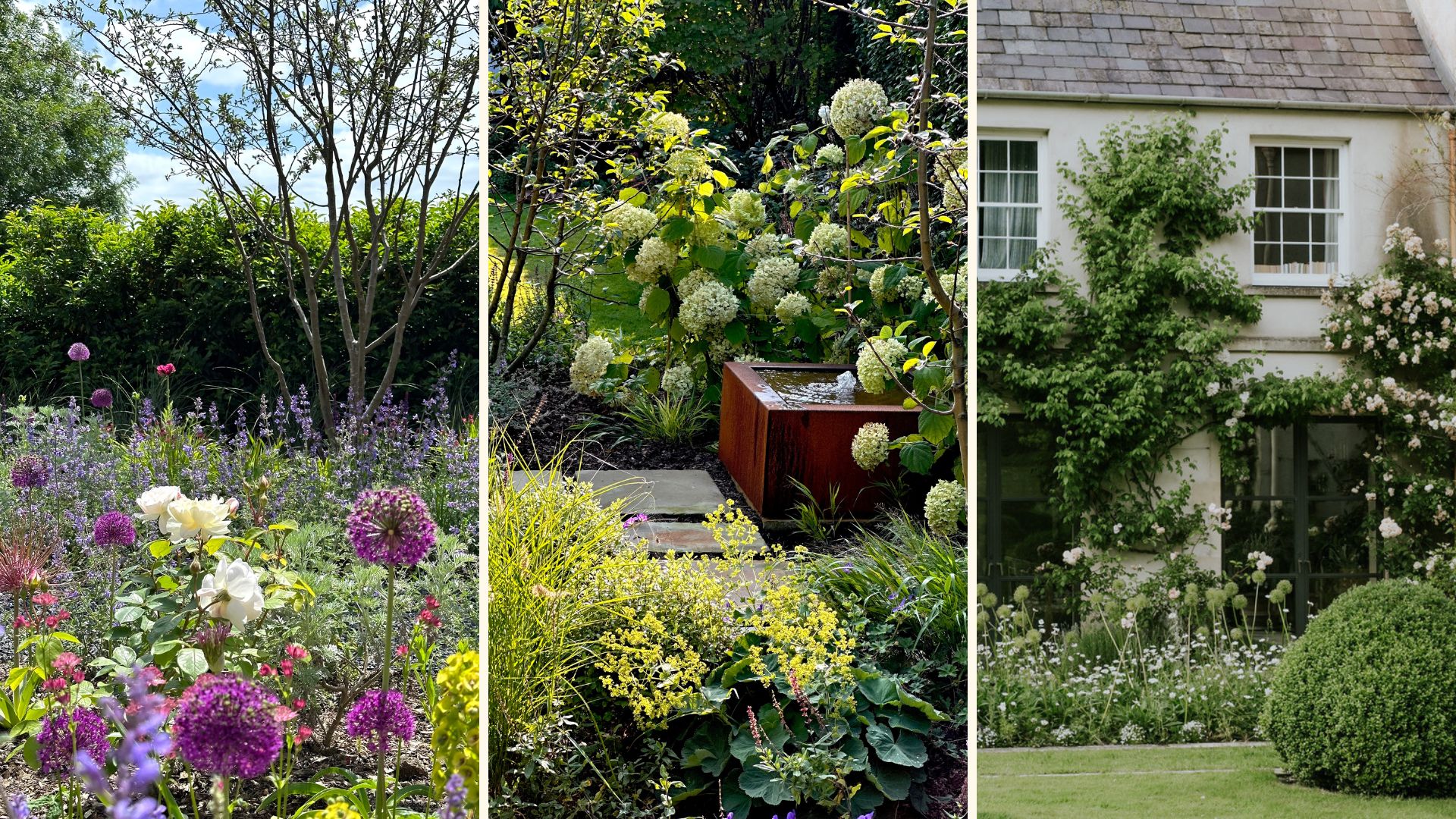
Now is the ideal time to explore the latest garden trends in 2025 and seek inspiration for planning key planting, pruning, and landscaping to be summer-ready.
While every garden design is different key influential garden trends can help to reshape how we curate our outdoor spaces each year.
From quiet luxury garden trends to uplifting colour schemes, and Mediterranean-style planting to cultivating outdoor living areas, this year's garden trends offer all manner of creative ideas to update any outside space.
We've spoken to leading landscape gardeners, members of the Society of Garden Designers, and planting experts to gain insight into the most popular gardening trends to update plots ahead of summer 2025...
Garden Trends 2025: 16 of the biggest influences
In recent years there's been a common thread running through all trends to cater to a well-being and sustainable living perspective too. This continues to influence interior design trends and garden trends for 2025 and will continue to shape how we value our outdoor spaces for years to come.
Whether starting from scratch; updating an intimate balcony area; perking up a patio ready for entertaining, or sprucing up a sprawling lawn, these latest trends are here to help inspire your gardening journey.
From allotments supporting grow-your-own and traditional country garden ideas to vibrant planting schemes to celebrate colour, there’s something to suit plots of all shapes and sizes.
1. Environmentally conscious spaces
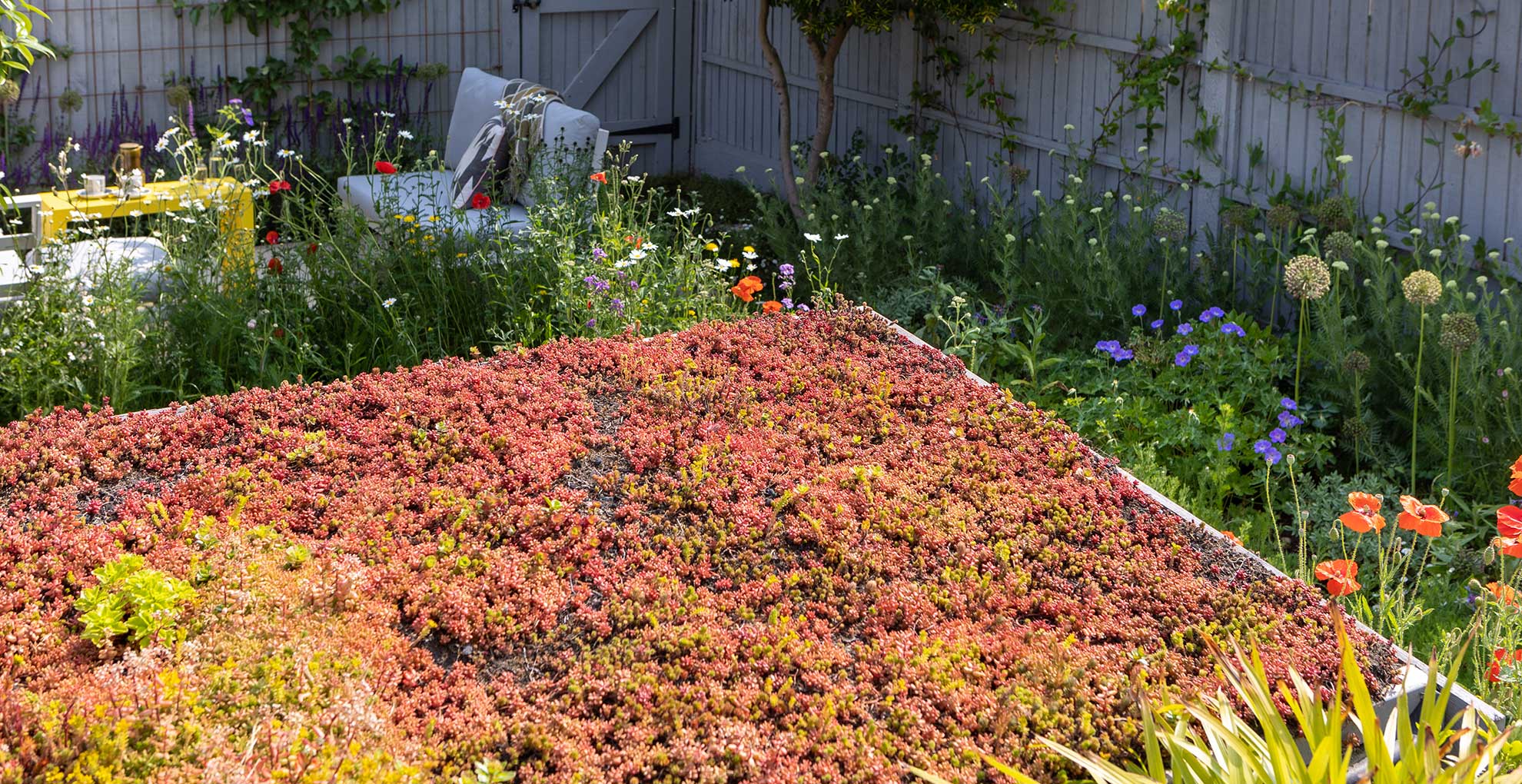
Sustainable and eco-friendly gardens are nothing new, but as we begin to gain a better understanding of what this means when designing gardens to benefit the wider ecosystem it continues to grow in importance – making sustainable garden ideas key.
“Garden designers are increasingly aware of the role that they must play in educating and encouraging our clients to introduce wildlife-friendly, water permeable and carbon-neutral elements into their gardens," says professional gardener Sarah Kay. This includes wildflower meadows, green roofs and insect habitats to help ease the pressure on the twin crises of climate change and loss of biodiversity.”
"As global warming hits 1.5 degrees, climate change is presenting increasing challenges -very high rainfall, warmer, wetter winters and indeed summers, with high temperatures throughout the year - and designers must respond," says Libby Russell, director at Mazzullo Russell Landscape Design.
"Trends, therefore, are for more resilient, more thoughtful landscapes where designers need to create not just beautiful but sustainable and resilient landscapes too. This can only be done with a real understanding of the challenges and very considered responses to them plus an element of trial and error due to unpredictable conditions. Wilder, more naturalistic gardens that have less hard surfaces to collect water and provide better coverage for soils from heavy rain also help.
2. Naturalistic 'wilder' planting
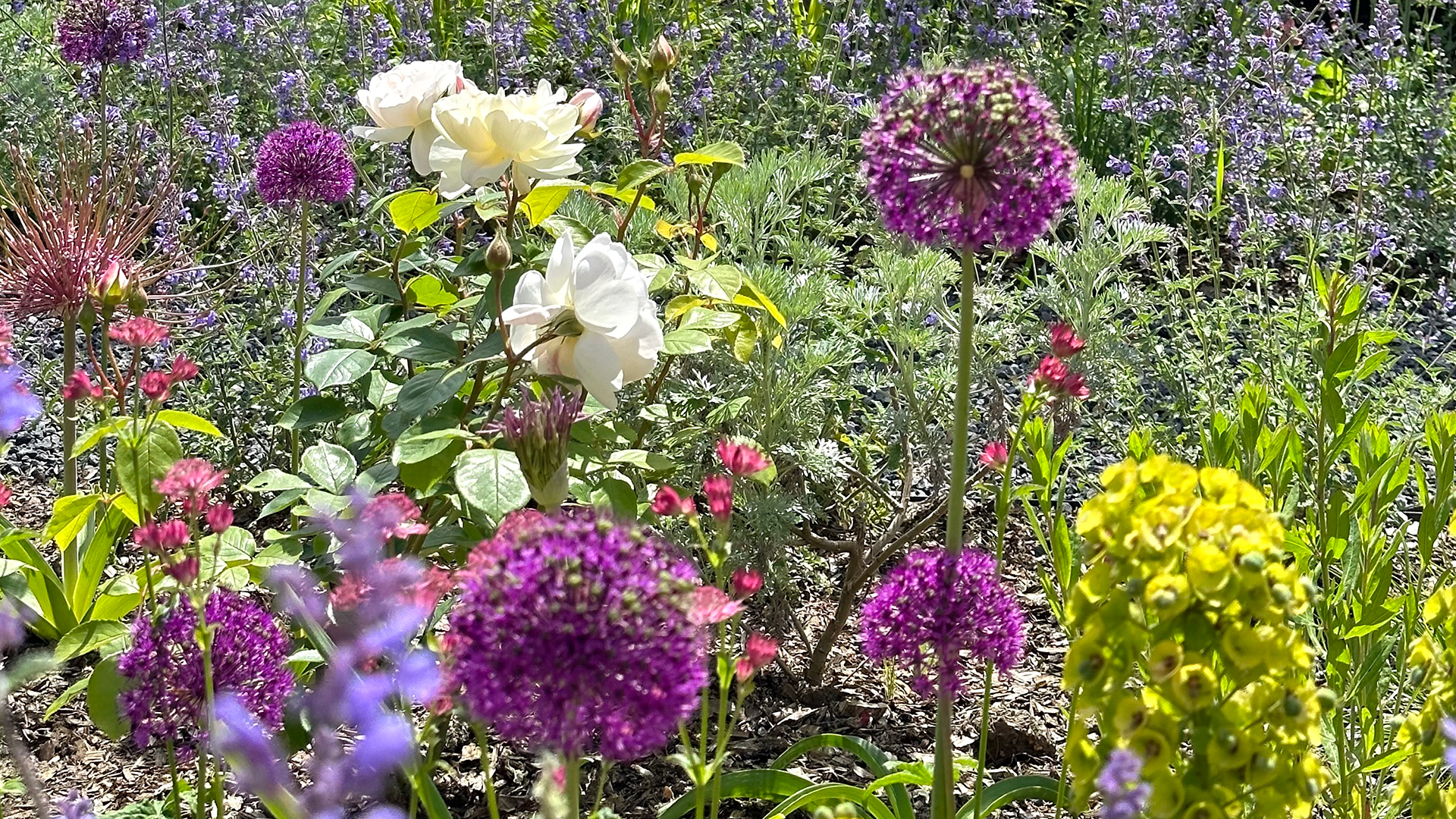
The popularity of the untamed re-wilding garden trend shows no sign of waning, therefore making naturalistic gardens incredibly relevant in 2025. These gardens represent a commitment to biodiversity, incorporating native plants and wildflower meadows that require minimal maintenance but plentiful rewards for the ecosystem.
“Designing gardens with a focus on biodiversity and ecology is about creating enduring spaces that foster a deeper connection to the outdoors,” explains Mark Latchford, an award-winning Landscape Design Director at Holland Green. “By cultivating environments that invite people to engage with nature, we create gardens that not only stand the test of time but also offer spaces where lasting memories can be made.”
The rewilding trend continues into 2025 as we try to create more sustainable gardens which are better able to withstand environmental stresses," says garden designer Fiona Lamb. "Planting a variety of species and improving the biodiversity will also attract different pollinators, birds, and insects into our gardens."
"By mixing plants with varying sizes, shapes, colours, and flowering seasons we can provide year-round food and shelter for these creatures as well as help ameliorate the effects of a changing climate. It's a win-win situation as this will also give you an interesting and vibrant garden throughout the year."
3. Welcoming wildlife
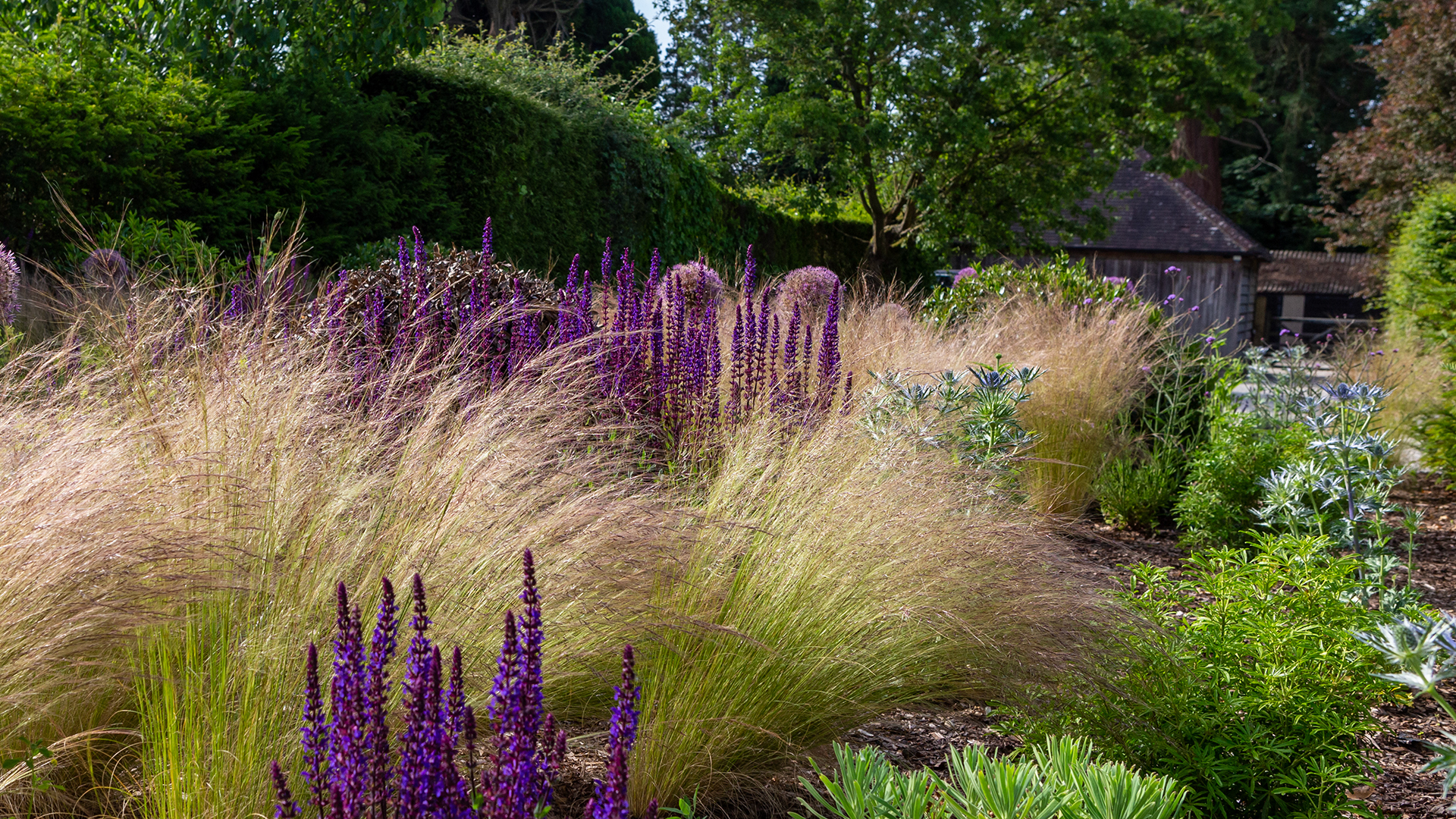
Welcoming wildlife into our green spaces continues to go from strength to strength, with all creatures great and small welcome – from sourcing the best plants for pollinators to seeking ways to attract birds into gardens.
“Incorporating wildlife-friendly elements is no longer a trend but a responsibility,” continues Mark Latchford at Holland Green. “By selecting native plants and creating habitats, we enhance both the aesthetic and ecological value of a garden, providing a sophisticated yet sustainable outdoor retreat for both nature and people.”
Water is the easiest way to encourage wildlife into the garden, from water baths to ponds the draw of water attracts all manner of wildlife. While catering to wildlife is important, it's also important to ensure their safety.
A top tip for ponds - or any other water sources deeper than a few centimetres - is to ensure there's a way out should any small animals fall in. For example, with a pond try stacking rocks or bricks inside the pool at the edge, this will create a staircase for the wildlife to escape if need be.
Helen Elks-Smith FSGD agrees, explaining: “Wildlife and insects don’t need gardens and landscapes to have a particular design aesthetic, they don’t care whether a garden looks ‘wild’ or whether it looks ‘formal’, what matters is habitat, food sources, and shelter," Helen explains.
"Creating a wild garden or trying to recreate a native environment is just one approach; there are others and different approaches and design aesthetics must be encouraged and allowed.”
4. Connective spaces
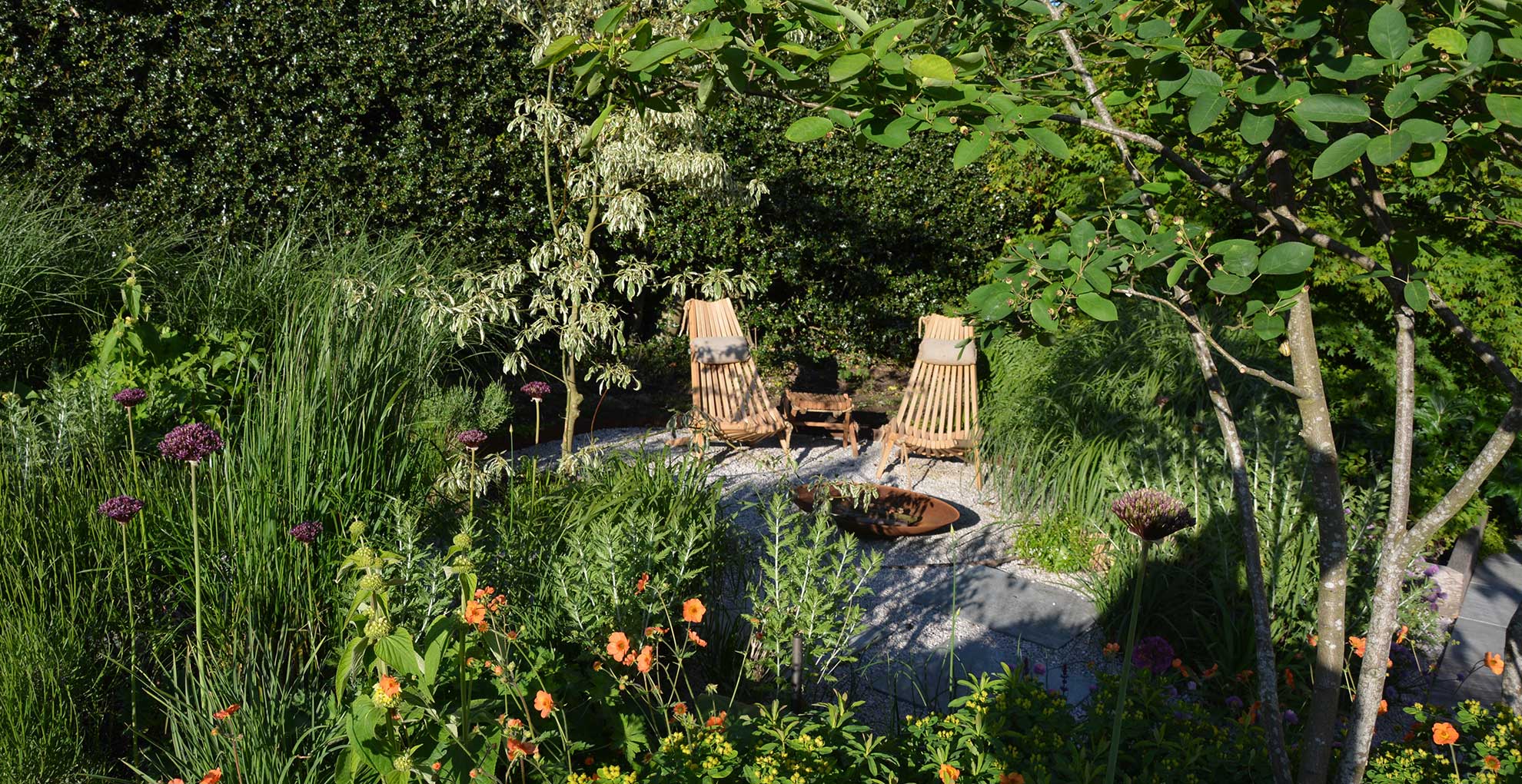
Gardening and wellness go hand-in-hand, but even more so this year as we strive to create a sense of connection and well-being in our outdoor plots. As professional gardener Rachel Bailey, MSGD explains: "There will be a greater focus on people using gardens to connect with nature and for their health and well-being.”
"I have always been motivated to create a connection between people and their innate love of nature," says James Scott (FSGD), managing director and principal designer at The Garden Company. "As we look ahead to gardening in 2024, I’m delighted to witness the growing popularity of this concept – known formally as biophilic design.
"The design intention is a seamless integration between indoor and outdoor spaces which draws on the beauty of nature. This will include using more vernacular, sustainable materials and a shift to more soft landscaping, with an emphasis on naturalistic, immersive planting. Such outdoor spaces will be a haven not only for the homeowner but for local wildlife and pollinators too."
The connective spaces trend has wellness at its core, where garden design embraces the restorative and healing powers of nature.
"Inspired by calm waters, tones of light and serene shades of blue, this theme uses stripped-back natural wood to achieve an on-trend, cool vibe that promotes relaxation and transports you to an oasis of calm," explains Dobbies’ horticultural director, Marcus Eyles, noting how embracing nature’s green is a wonderful way to welcome mindfulness into your garden.
He suggests utilising darker green plants at the back of borders to create a cocoon effect and then layering lighter tones towards the front of your display. Not much colour is needed to achieve a tranquil garden look as a neutral palette will lend itself to a more cohesive look. If you’re looking to welcome seasonal colour, Marcus suggests keeping it to low-level plants and not mixing too many vibrant shades.
5. Resilient and hardy plant choices
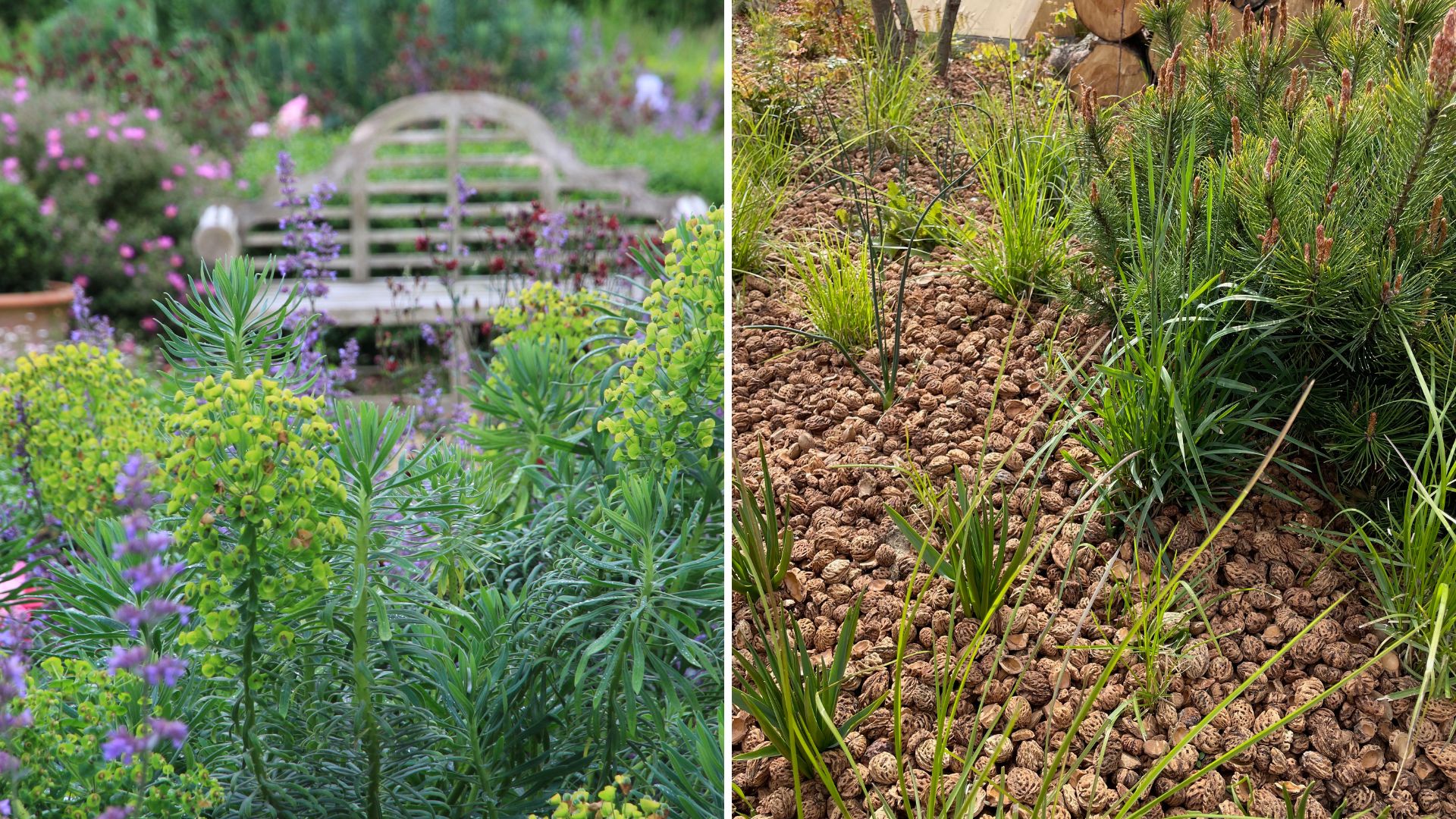
As demonstrated in recent years, hot summers, unpredictable rainfall patterns, and lack of water are becoming all too familiar, and with that comes a trend towards tougher, more resilient planting.
For garden designer Matthew Childs, plants that provide year-round colour and interest and which create some joy in the garden will still be central to his designs, but he will also be looking for resilient plants, such as long-flowering Salvias, that are great for pollinating insects and wildlife.
“It may not sound very exciting but we’re also going to be thinking much more about how we dress the surface of planting areas to help keep moisture in and competing weeds out so that our planting schemes are more resilient to the changing climate," Matthew says. He will be using recycled building materials such as crushed concrete, as well as fruit pits and nut shells to form natural mulches and path surfaces.
"We are increasingly aware that some kinds of planting will only thrive in certain parts of the country unless site conditions are varied such as by adding gravel layers to create a free draining surface which helps more drought-loving plants," says Libby Russe. "Our plant choices vary but we are looking for resilient plants, often using interesting cultivars of wildflowers thriving in a local area for instance."
Landscape architect Marian Boswall, MSGD hopes to see more trees, especially in city gardens "where", she says "they can help clean the air and reduce the urban heat island effect". Marian recommends the drought-tolerant crab apple tree as a perfect addition to any garden. "Its blossom feeds insects in the spring, and in the depths of winter, when the ground is covered in snow and there is little to eat, its tiny apples provide nourishment for birds."
6. Planting a canvas of uplifting colour
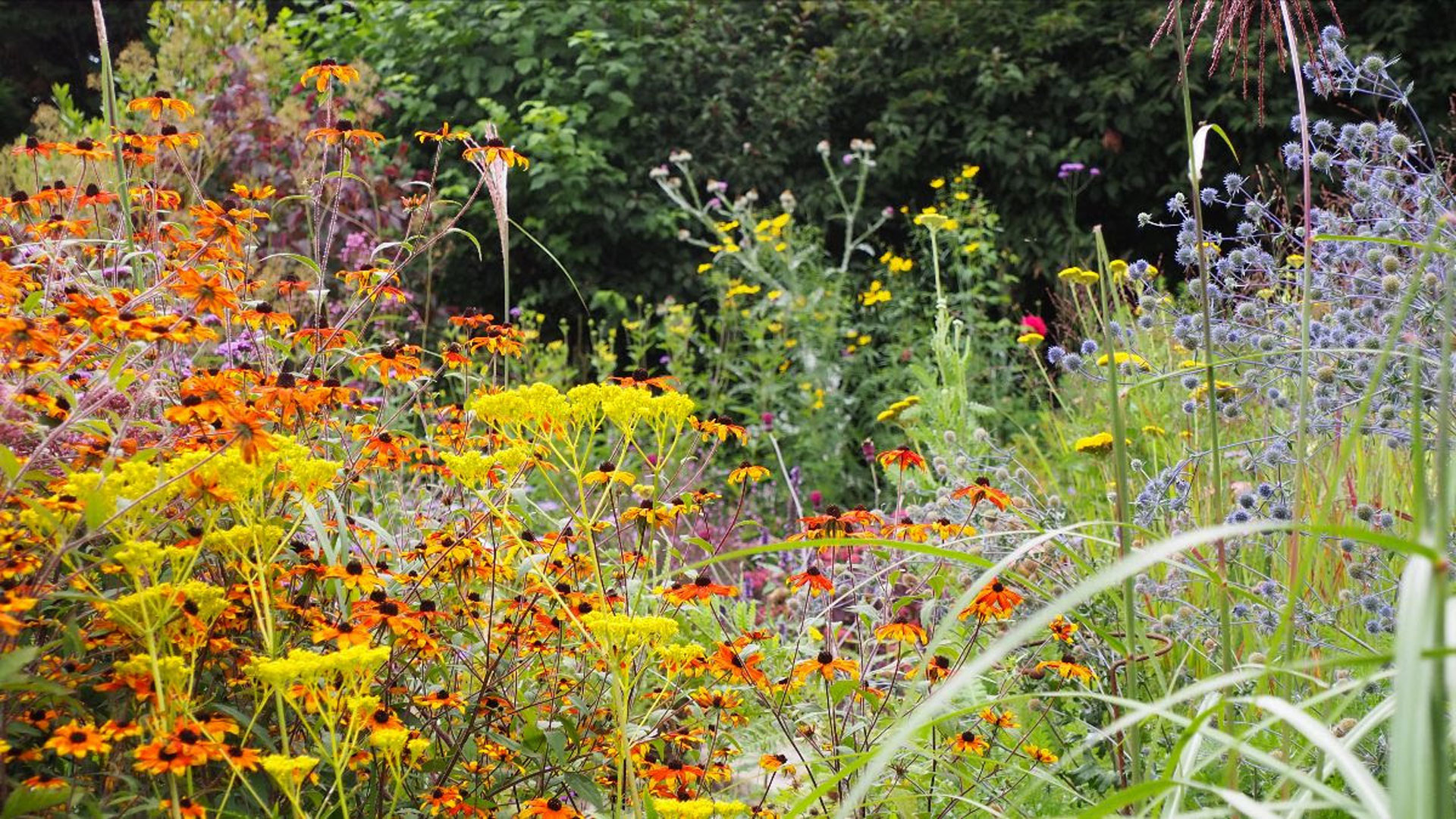
We're seeing uplifting colours taking centre stage this year, the Dulux Colour of the Year 2025 True Joy is a fine example. When our interiors are bursting with bright feel-good colours it's no surprise that principle is being continued to outdoor spaces too. It's the year for bright, uplifting colours – across planting, furniture choices, and even exterior paints.
With colourful flowering plants back on trend for Spring and Summer 2025, experts are encouraging gardeners to embrace the vibrancy of nature to create their own garden retreat. Roses and Hydrangea will help you achieve this look in pots and borders, and climbing plants is a great way to enjoy a country garden in small spaces.
Florals, foliage and fragrance are put on centre stage in this theme. Plants that fit in include the Acer palmatum, variegated Abelia, Echinacea and Hebe shrubs, as well as other evergreen shrubs and extended flowering plants that will allow you to enjoy colour for longer.
Pick shades that complement one another and group complementary colours together: reds, yellows, oranges, whites and blues, and purples and pinks. Think rainbow brights for borders and bedding plants to create a canvas of colour to accentuate the luscious greenery of surrounding evergreen shrubs and grass.
Experimenting with colour is one of the most exciting things about designing a garden for many gardeners. Professional gardener Fi Boyle is a big fan of grouping vibrant jewel colours.
Fi says: "I love to combine strong magenta reds like Rosa ‘Munstead Wood’ with moody purples, deep blues, and limes. Adding in plants that have coloured stems and leaves such as Salvia ‘Caradonna’ with the dark purple stem or Sedum ‘Karfunelstein and Heuchera ‘Plum Pudding’ for a stunning effect."
To embrace the vibrancy without overpowering the whole plot, consider keeping the colour to dedicated areas. Outdoor pots are always a great way to add accents of colour around any outdoor space, to elevate a colour scheme with minimal effort.
7. Cultivating low maintenance lawns
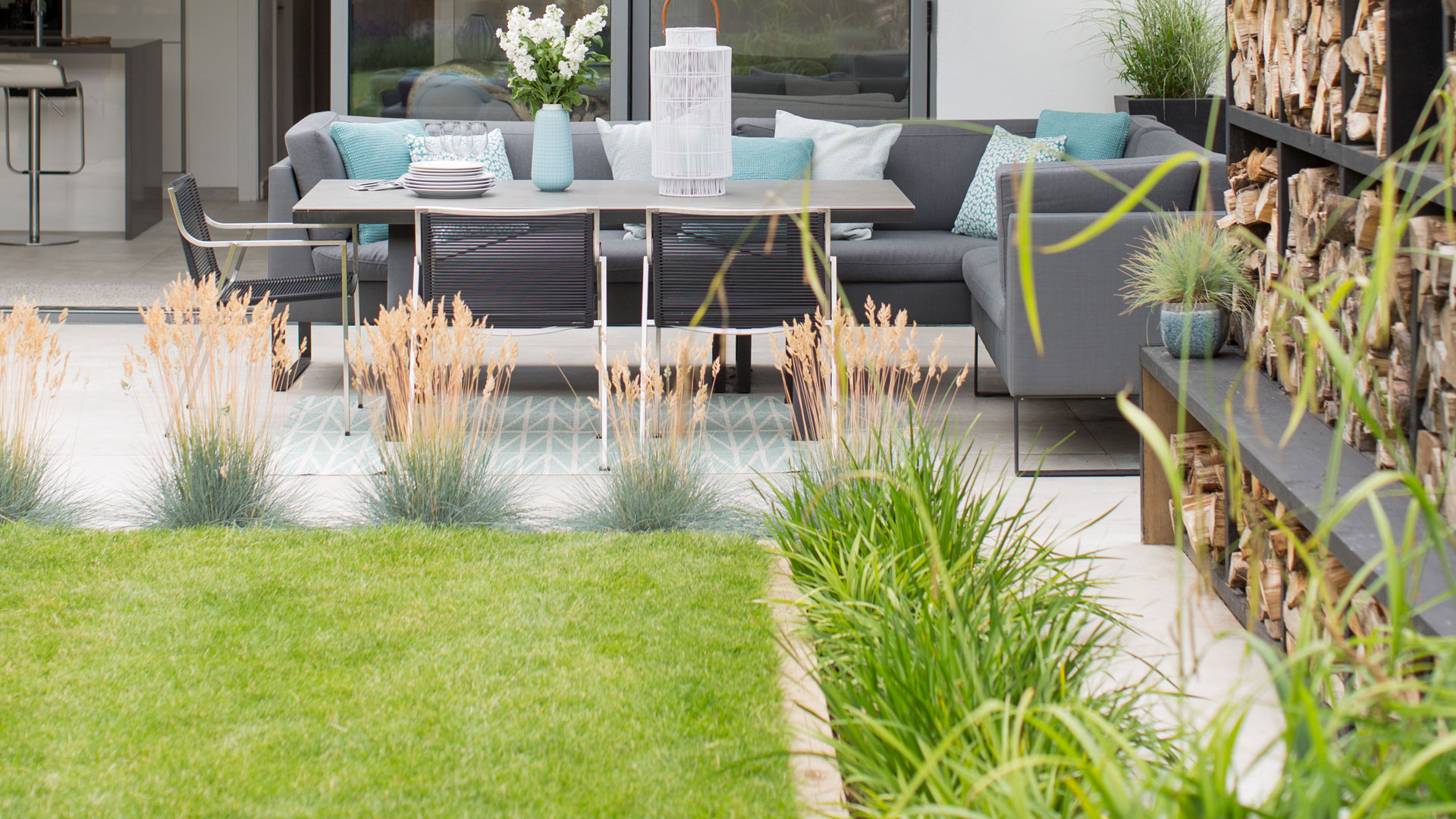
Speaking of lawns, in a bid to encourage homeowners to stay loyal to natural turf, rather than be lured to the appeal of no-mow artificial grass options which have become popular, the greats in the world of gardening are championing low-maintenance lawns. Monty Don has been an advocate of this laidback approach for some time, where he encourages fellow gardeners to let the lawn grow a little longer.
Forget how often you should mow a lawn and think more about how often you should fertilize a lawn to take your grass to new lengths this summer.
Keen to introduce a ‘tapestry lawn’, as an alternative to the normal grass lawn’ is garden designer Ana Sanchez-Martin MSGD, who explains that they are created using a combination of many different mowing-tolerant plant species. "Like meadow lawns, they are low in maintenance and of higher ornamental and environmental value."
"The need to mow a tapestry lawn can be reduced by up to two-thirds compared to a regular grass lawn and, as a consequence, a greater number of both plant and insect species can inhabit the lawn. In small urban gardens, meadow lawns are not usually very practical, but a tapestry lawn could be a great solution for city gardens."
8. Grow your own
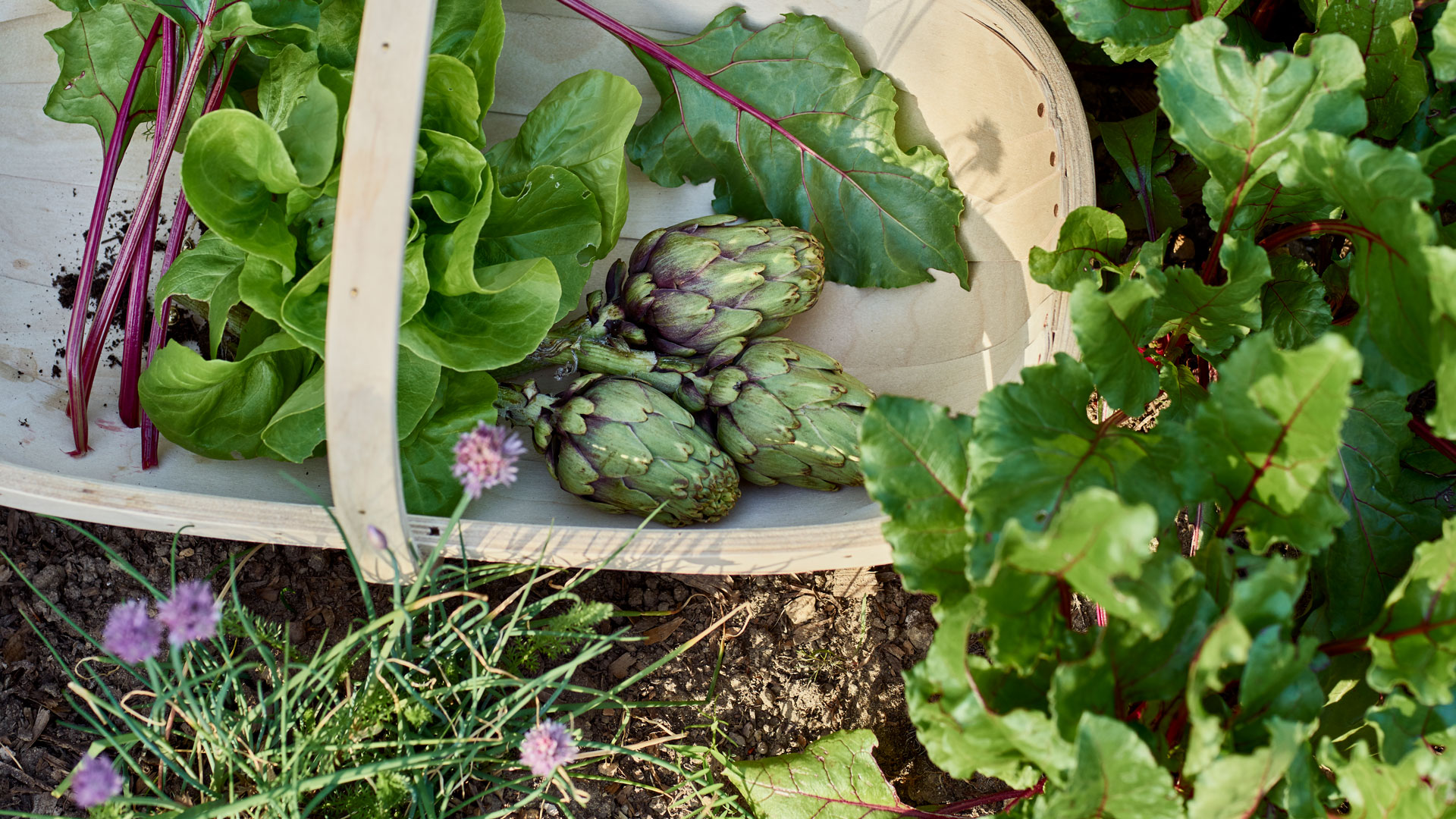
The grow-your-own movement continues to be one of the biggest garden trends and it shows no signs of fading – it's only becoming more important in current times but it is also being driven by the desire to embrace 'allotment living'.
“With financial considerations at the forefront of a lot of families’ minds, many are embracing the ‘grow your own’ movement," explains Angela Slater from Hayes Garden World. "This drive to introduce some homegrown veg into the diet began a couple of years ago and has grown steadily to include many families who have never previously grown vegetables."
The key to growing your own produce is finding the right area in your garden to cultivate delicious, edible goods. The misconception is that this requires masses of space, you don't, but you do need a level area with a good amount of sunlight exposure to build growing beds. Thankfully vegetable gardening for beginners is easy with a little guidance.
“It is easy enough to start to grow vegetables. All you need is a packet of seeds; some seed compost; a small plastic container, such as a yoghurt pot or fruit punnet, and a warm sunny windowsill," says Angela. "Start with some cress or micro herbs which can be grown for consumption indoors. The second step is to sow seed outdoors. Even if you don’t have a conventional garden, there are masses of vegetables you can grow in containers.”
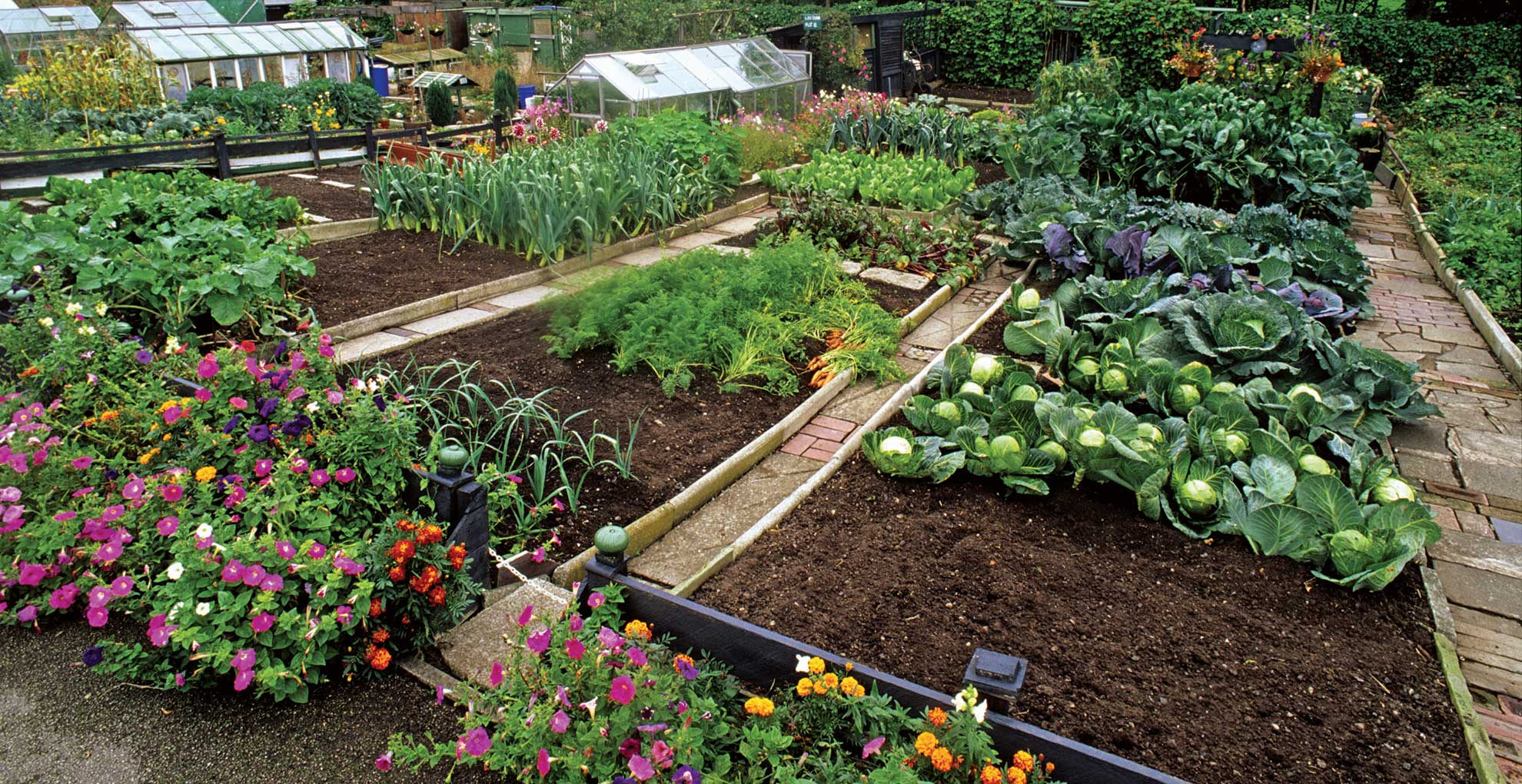
More than just a cost of living thing the trend is also about living the good life. "I’ve noticed how allotments are as popular as ever (I’m still on the waiting list for mine!)," says Holly Crossley, w&h's resident garden writer.
"As people make conscious efforts to slow down and enjoy the simple things. With all of this in mind, I expect the trend for growing veggies at home will continue in 2024. It’s a particularly great way for beginners to experience how mindful and rewarding gardening can be – whether that’s by tending to a tasty herb garden on the windowsill, planting some tomatoes in a mini greenhouse, or experimenting with different chilli seeds." Some of which are plants to sow in February.
9. Imperfect landscaping
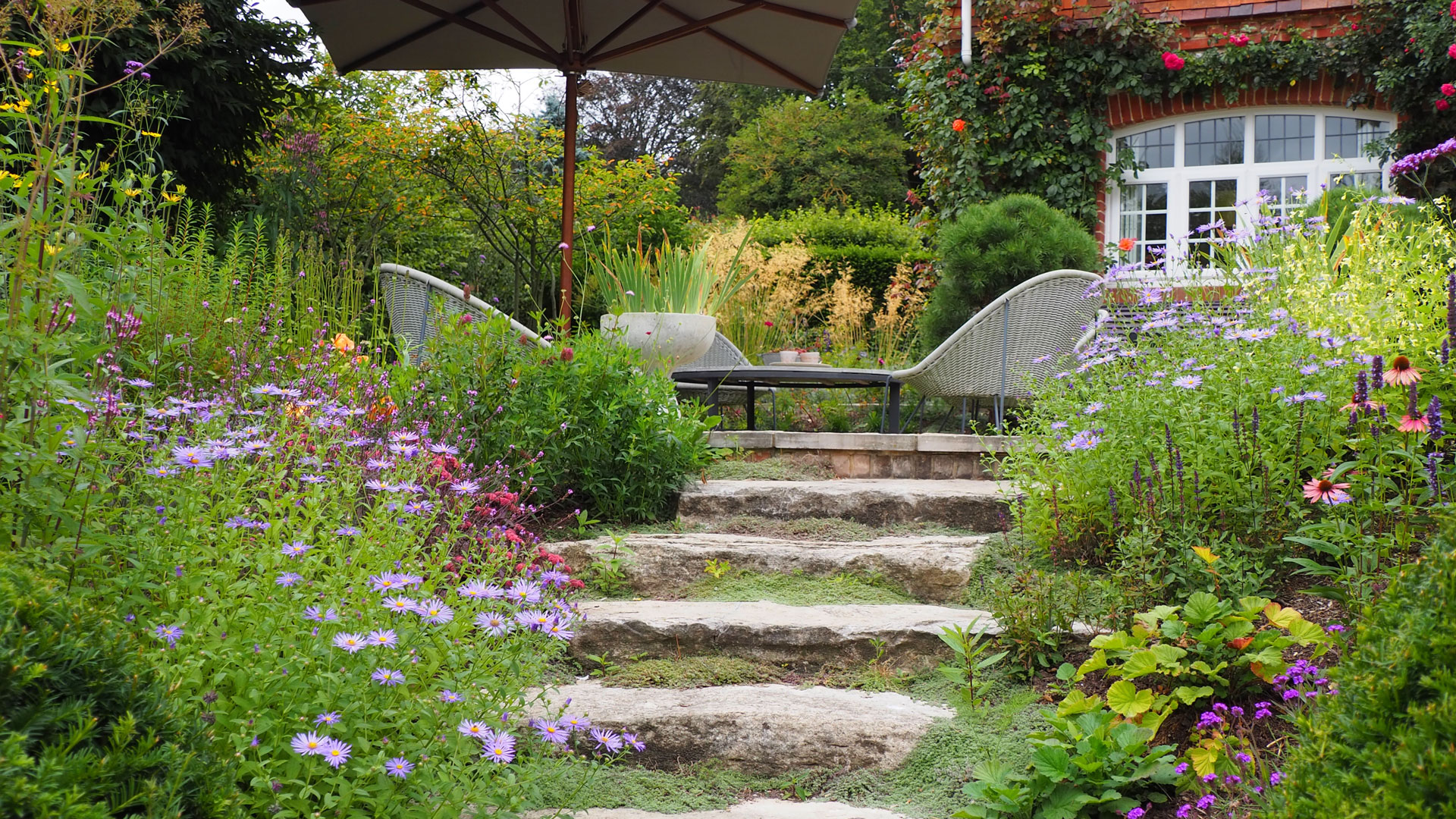
Joy to the ears of those less green-fingered outdoor fans, who enjoy the garden itself as opposed to the hobby of gardening and the maintenance that comes with it. "The future aesthetic of garden design will be a more relaxed one," says Andrew Duff MSGD, vice chair of the Society of Garden Designers.
"We will become more accepting of the imperfections in our world which make it even more beautiful. The romantic and overgrown look which I enjoy creating will give you the time to actually sit back and enjoy your garden whilst establishing a robust and adaptable space flourishing in the unpredictable weather.
In agreement with the imperfect landscaping trend is garden designer Ann-Marie Powell MSGD who predicts ’nature-scaping’ and ‘curated wildling’ are set to be the biggest buzzwords in the world of gardening right now. "I’d say the trend for this year is the immersive, natural, wildlife garden."
Ann-Marie shares how her studio is receiving increasing inquiries from clients wanting their finished gardens to look effortlessly pulled together. "People want gardens that look like they are ‘of nature’ rather than the more obviously designed spaces." So planting is loose, with long grasses taking centre stage, and hard landscaping and garden paths are rustic and less structured.
10. Sowing wildflowers
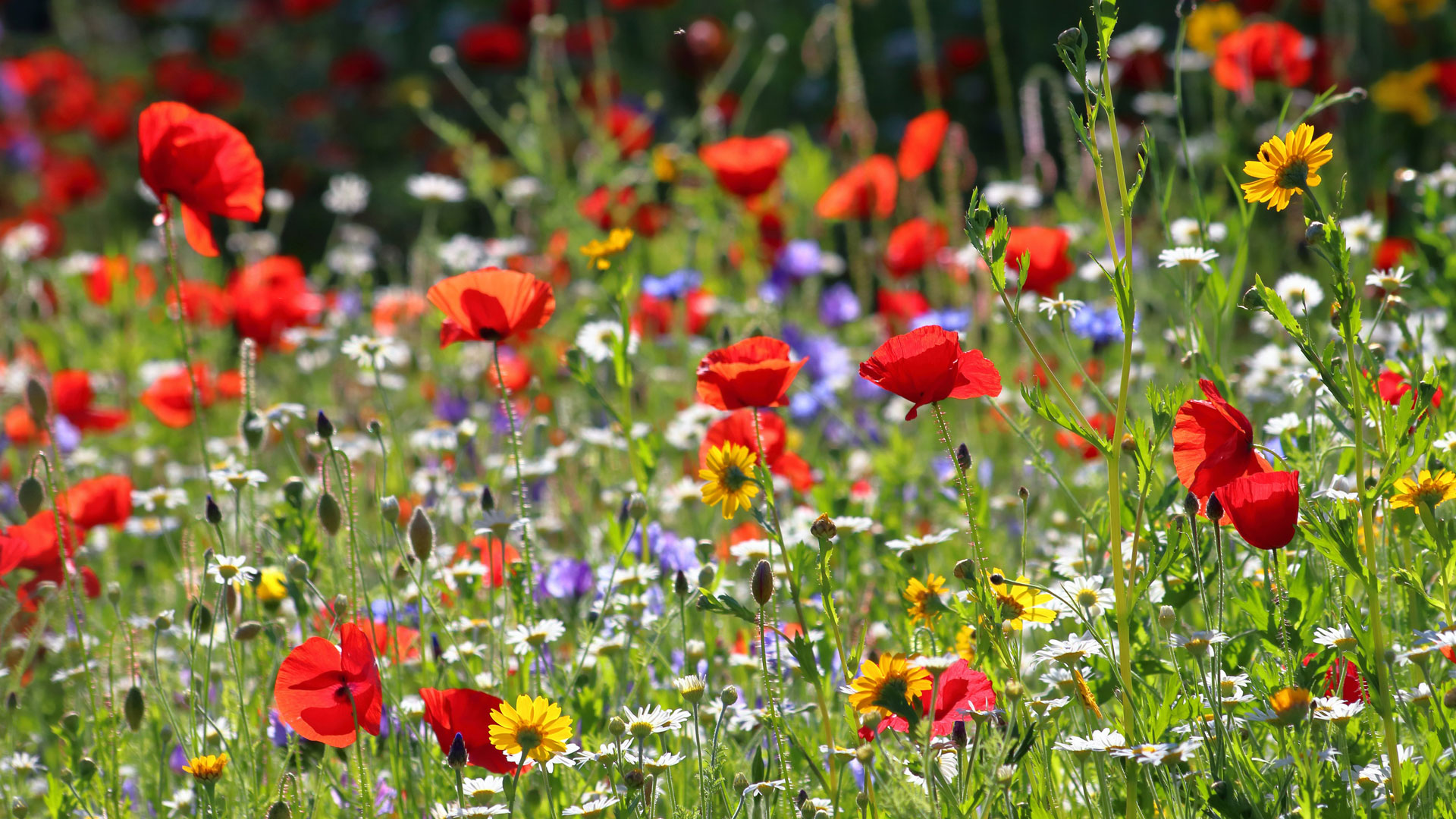
In harmony with the garden trends for wilder landscapes and the plight of aiding the bees, meadow flowers are proving hugely popular. "Wildflowers are high on gardeners’ priority lists," says Marcus.
"The best time to sow annual wildflower seeds is March to May, to flower this year, or perennial varieties in September to October for flowering the following year. Scatter packs can be sown directly from the box to your garden soil as an easy solution."
“Anyone can plant wildflowers, even if you don’t have a garden space as they can thrive in window boxes or plant pots on balconies. The more wildflowers you plant the better it will be for your local wildlife, so planting across your whole lawn will give the greatest benefit. Wildflowers are hugely attractive for bees and other pollinators alike and do remember to plant in an open sunny position for greatest success.”
11. Mediterranean-inspired gardens
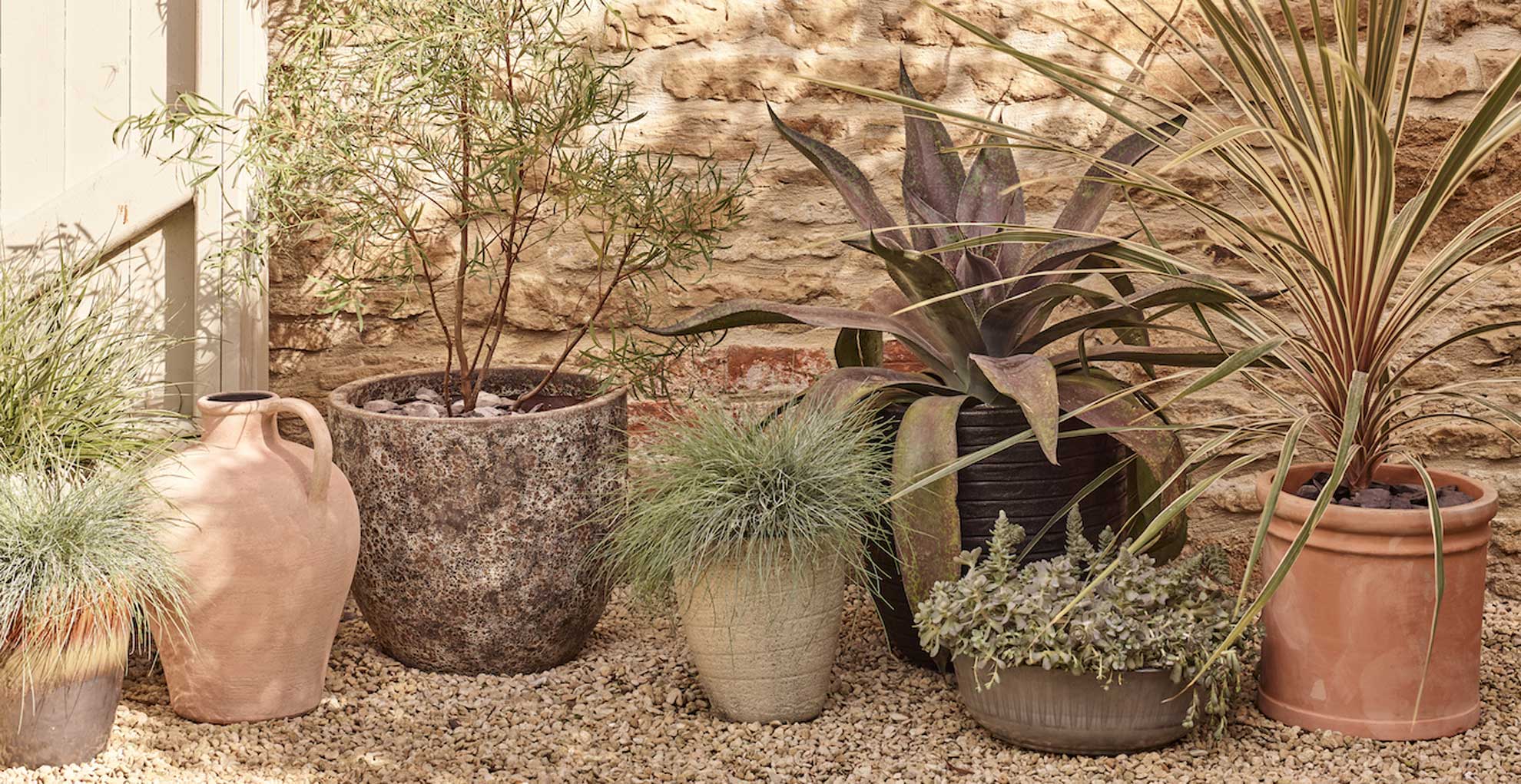
As with how the outdated interior design trend of farmhouse escape is being replaced with Mediterranean-style influence our gardens are set to follow suit. It could be the change in climates or merely the drought-resistant qualities but Mediterranean gardens continue to be hugely influential for 2025.
This Mediterranean sunset-inspired theme brings together ornamental grasses, citrus plants, and succulents complemented by natural terracotta pots. "Recreate your own earthy look with succulents and citrus plants, arranged together in textured pots for an ultra rustic feel," suggests Marcus.
Grasses in borders and pots dotted around the garden are a brilliant way to add texture and layers to planting and you can usually find these types of grasses alongside the usual shrubs and bulbs.
"Grasses are always popular and none more so than this year," explains professional gardener Rachel Morgan, @Terra_Legra. "People are realizing what good value plants grasses are - they add instant impact, provide height and movement, can easily and affordably be repeated throughout borders to give an effortlessly beautiful effect. My favorites are Stipa Pony Tails and Panicum Virgatum Heavy Metal."
This garden trend also lends itself well to the sustainable planting movement, a trend that Marcus predicts will continue to rise in popularity this year as more people become aware of their carbon footprint and set out to find eco-friendly ways to enjoy their outdoor space.
Marcus suggests: "reusing containers where possible and investing in good-quality pots in weatherproof materials like terracotta, that will last for years, as this is an easy way to create less waste in the garden."
12. Smart Gardening
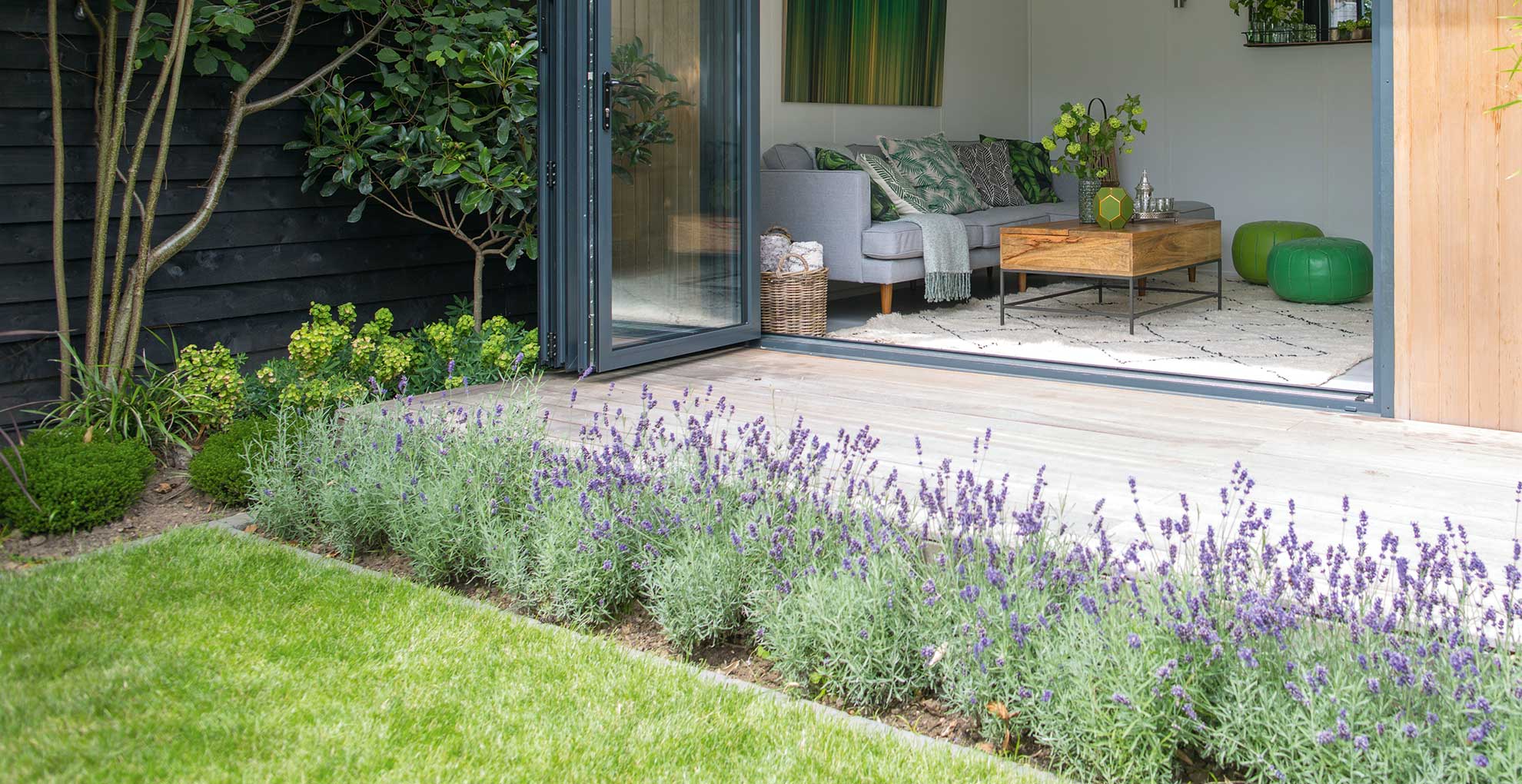
Similar to how technology is shaping lighting trends and leading kitchen trends, smart tech is also changing the nature of gardening.
"In 2025, technology is set to play an increasingly prominent role in gardening," says the expert team at British Garden Centres. "The rise of apps is making it easier to engage with gardening, allowing users to access advice, track plant health, and connect with gardening communities at the touch of a button."
"Motion sensor lighting is transforming outdoor spaces, making them usable after dark and enhancing security around homes while illuminating pathways and garden features. Also, the introduction of robot lawnmowers is revolutionising lawn care, offering homeowners the convenience of automated mowing. As these technologies continue to evolve, they are not only simplifying garden maintenance but also encouraging more people to venture outdoors and cultivate their own green spaces with ease and enjoyment.
Smart tech allows effortless control over your garden's water needs, whether you're home or away, providing the ability to aid with watering garden plants and monitoring how much you should water your lawn.
13. Scent driven schemes
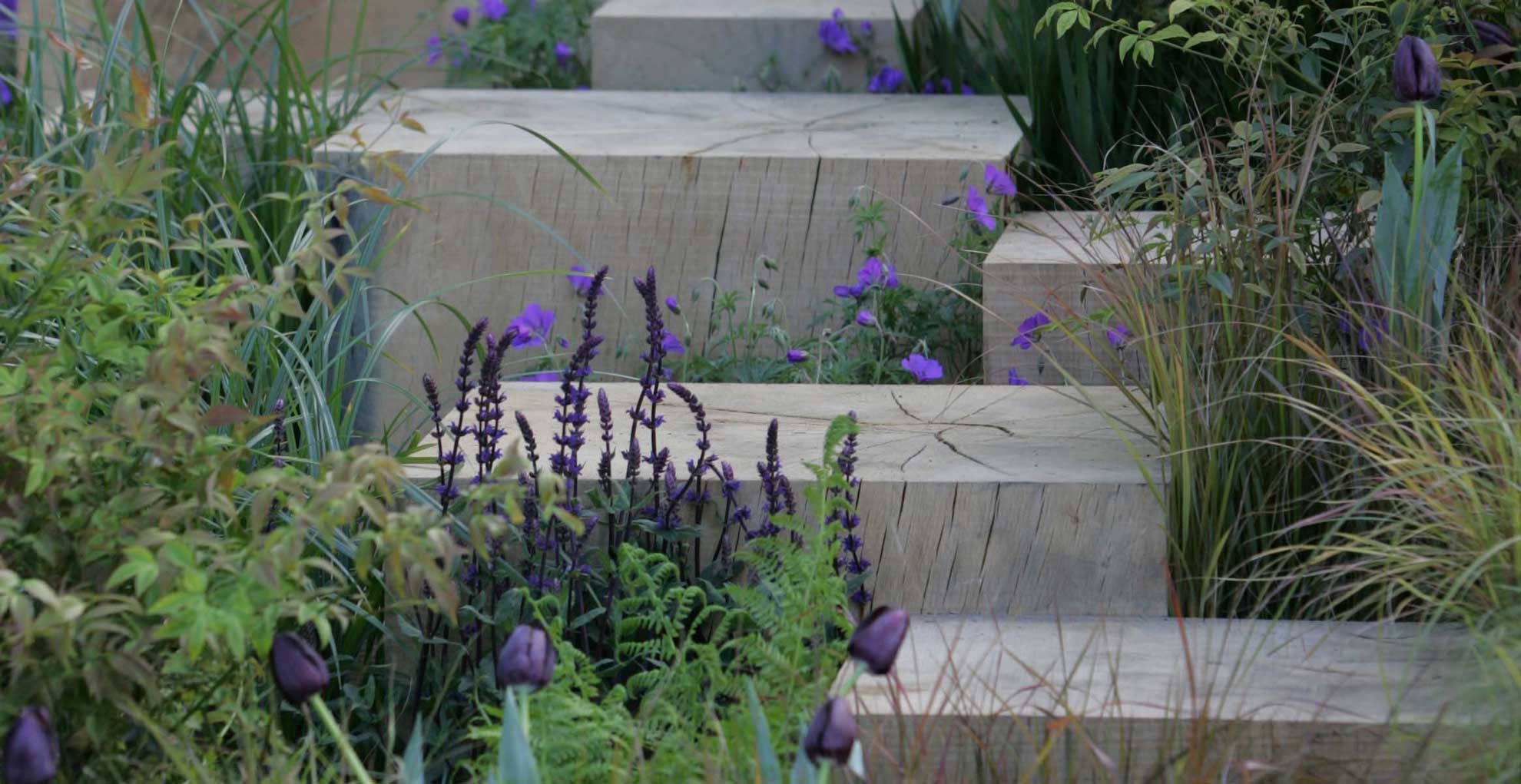
Fragrant plants and flowers are a key point of focus for planting in 2025. Taking the principles of how to make your house smell good, this year our gardens are awash with fragrance to delight the senses.
“Scented plants are a must, either in containers or the herbaceous beds," says garden expert, Angela Slater. "One of the best climbers is Trachelospermum jasminoides with dainty starry white flowers. If you have ever holidayed in the Mediterranean, then you will be familiar with its gorgeous heady perfume.”
“There are plenty of scented climbers if you want a bit of colour: scented honeysuckle, roses, and clematis ‘Sweet Sensation’," Angela suggests. "If you are growing climbers in containers, remember to use one proportionate in size to the plant, at least 18ins deep and 18ins across at the top."
"Place a piece of crock over the hole to ensure it doesn’t clog with silt and fill it with good-quality peat-free compost. Raise the pot off the ground with pot feet or 3 bricks, which will allow the water to drain clean away.”
Many of the best cottage garden plants, from iconic roses and elegant wisteria to scented lilacs are ideal for welcoming fragrance to gardens.
14. Intentional zoning
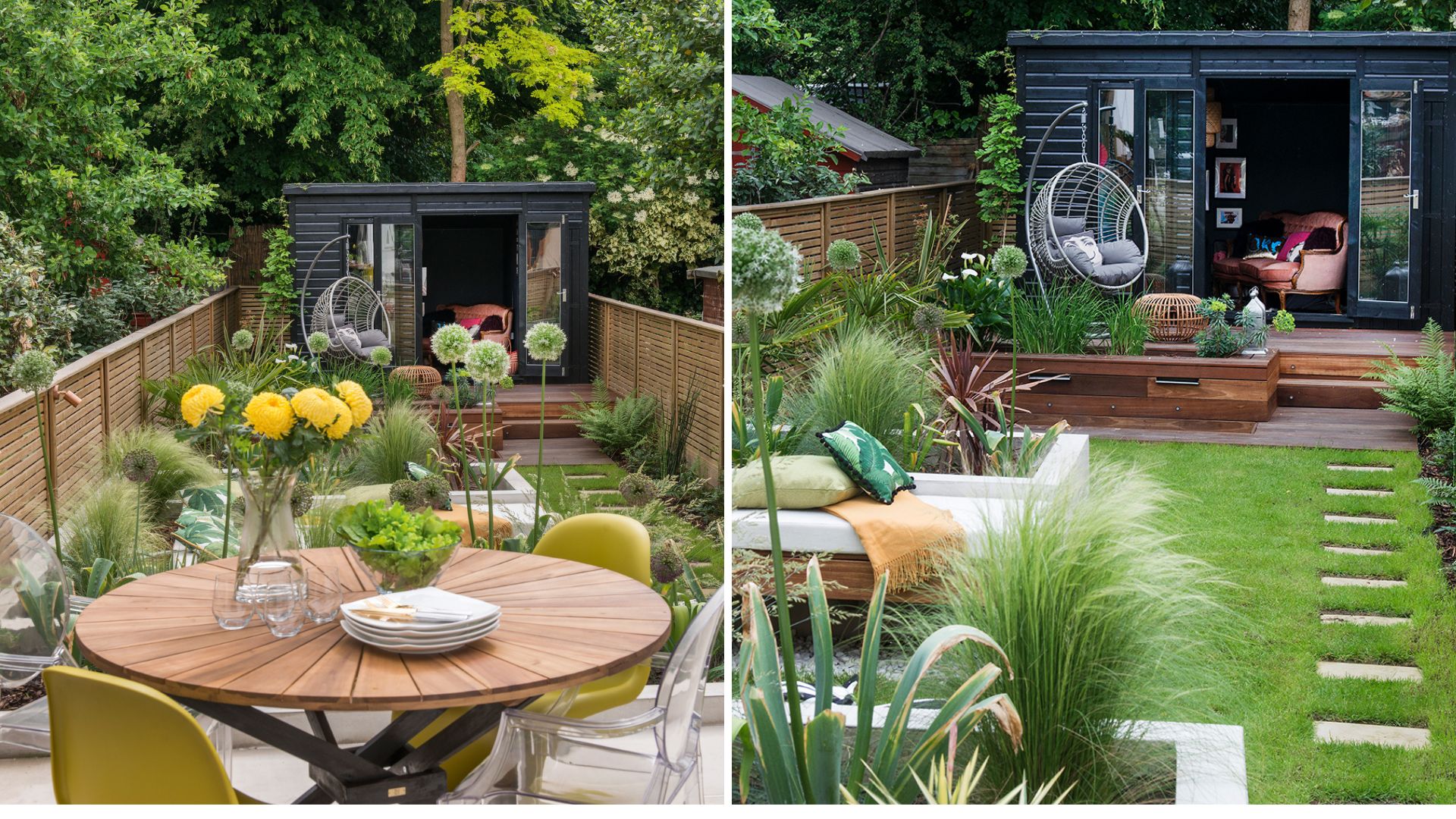
An ideal way to make more of any garden is to dedicate allotted zones to each outdoor activity, whether that be with thoughtfully structured planting or decorative garden screening.
The use of zoning is a great way to make a small garden look bigger because it creates a sense of greater purpose for every corner of the plot. It's also an ideal way to block a neighbour's view for added privacy.
“Secluded areas are a must this year,' states Angela. "We all need somewhere to chill out and leave the everyday stresses behind. Single cocoons or covered daybeds are ideal for this - just place them in a quiet corner.”
Separate a chill-out sanctuary from a busy decked area dedicated to entertaining, or a play area, to ensure each area has its own space within the same plot. By breaking the flow with decorative screening you are signalling a different use for each space, without enclosing any valuable ground coverage to make the garden feel smaller.
15. Creating an outdoor living room
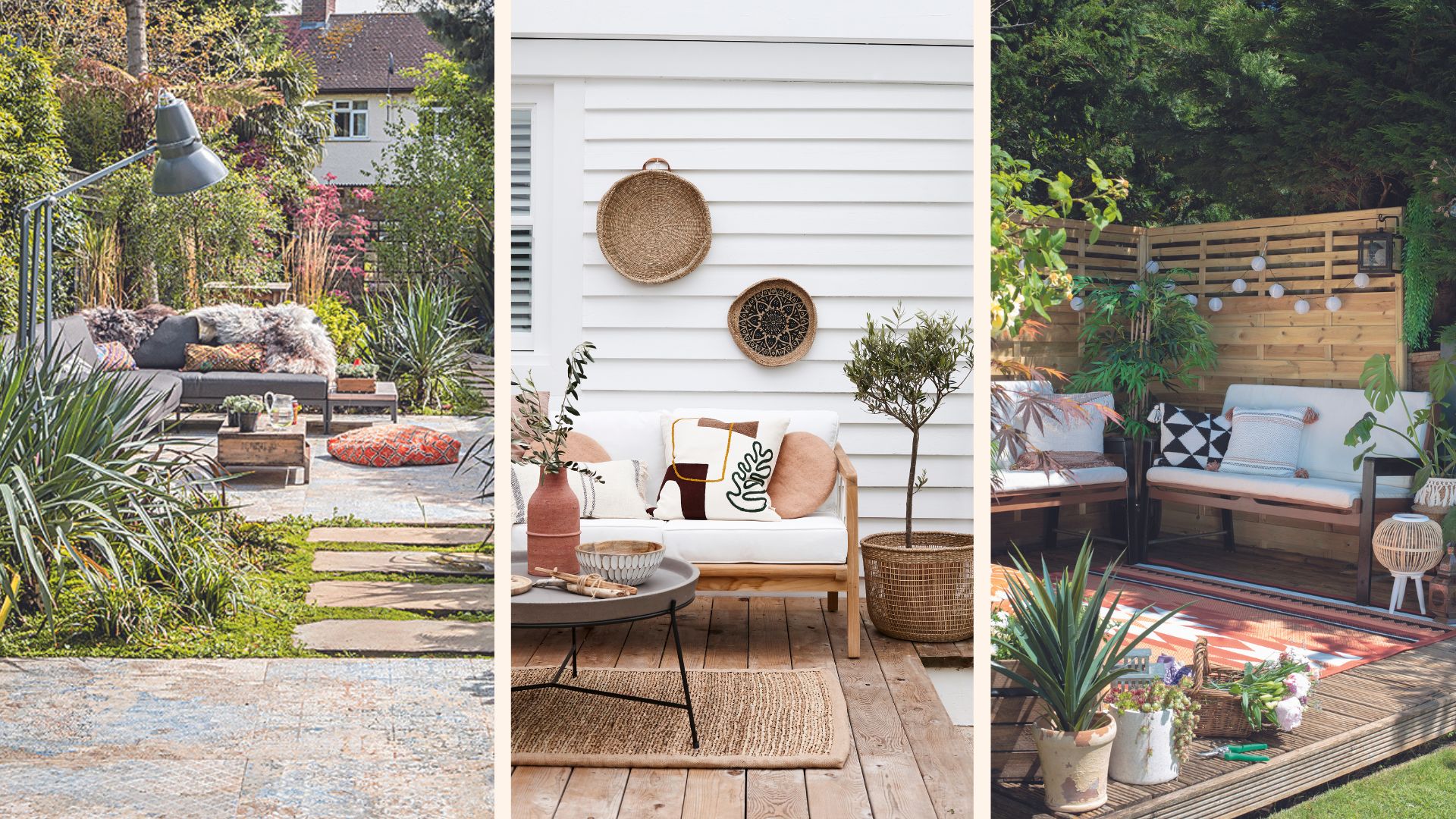
Blurring the lines between indoor and outdoor living is most definitely one of the biggest garden trends happening right now, where homeowners are looking to expand their lifestyles to incorporate outdoor space. With that outdoor living room ideas are going from strength to strength as our desire to spend as much time as possible outside continues to remain at the core function of any exterior space.
Outdoor living is no longer seen as a well-being trend, instead, it's becoming a new way of life for many. So, in the spirit of living outdoors, the trend for mirroring our interior decor choices outside perfectly sets the scene for entertaining and spending downtime in style. Think of it as picking up your living room furniture and quite literally placing it outside, from comfy corner sofas to recline in the sun to practical coffee tables for setting down refreshments and outdoor rugs for dressing floors.
Sabina Miller, buying director at Heal’s comments: “Outdoor spaces, both large and small, are increasingly being used as an extension to the home, and we’re continuing to see customers make the most of this extra space and enjoy the proven benefits of spending more time outside."
“Whether used to relax, work or entertain, the key to creating a functioning alfresco space is ensuring you have suitable outdoor furniture that will offer the same comfort and durability that you would expect from indoor designs" advises Sabrina.
"Cushioned seating provides a sumptuous spot to relax in the summer sunshine, whilst a robust woven backrest will offer plenty of ergonomic support. Look for weather-resistant materials, such as powder-coated aluminum, teak wood, and natural ceramic, which carry durable qualities to ensure your pieces are protected from the ever-changing, often unpredictable climate.No matter how much space you have available, it’s worth investing in a robust outdoor table" she adds.
16. Outdoor kitchens
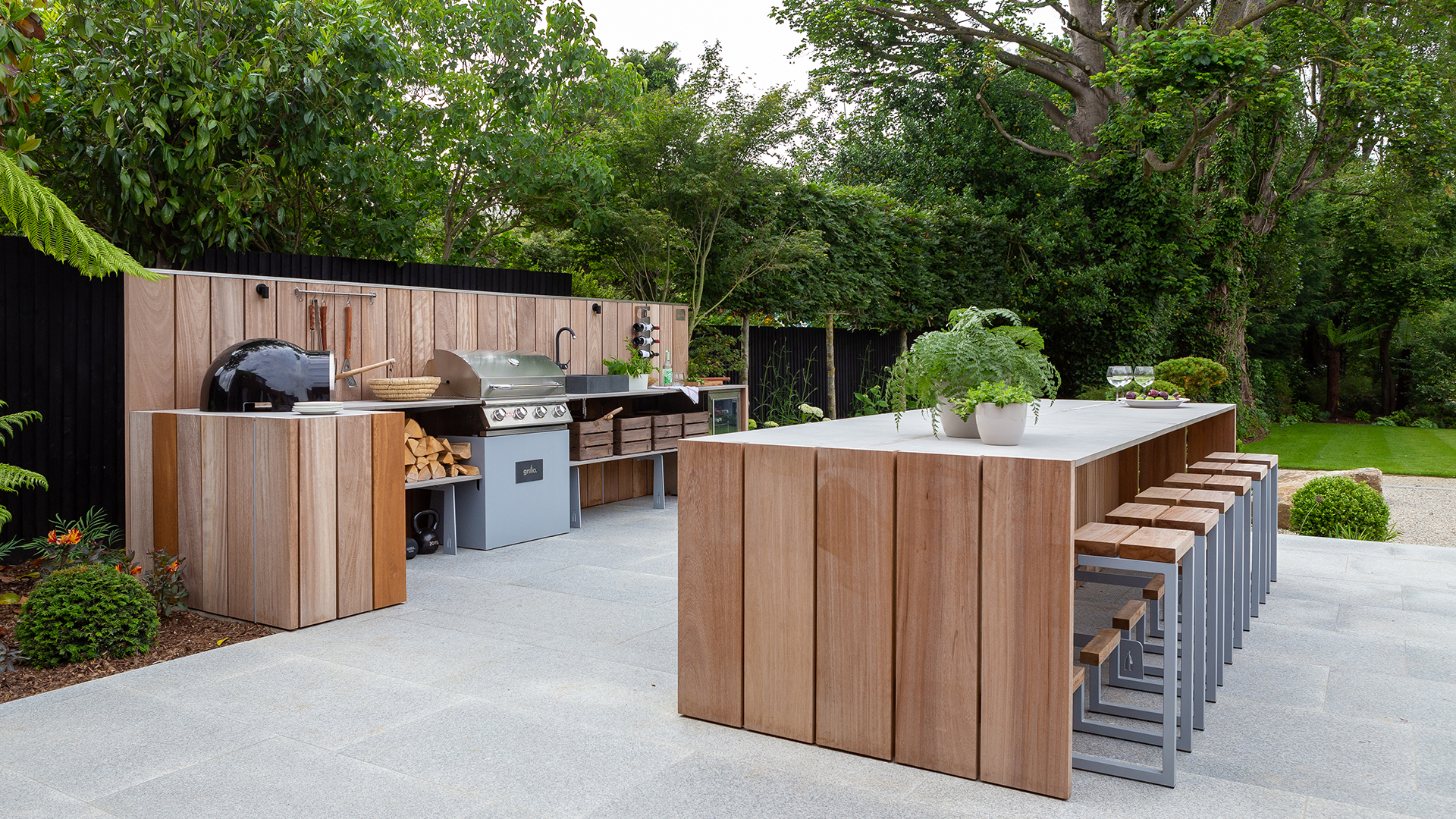
It's not just living rooms that are migrating outside, it's kitchens too. It seems that we can't get enough of entertaining friends in the garden and traipsing back through the house to cook and prep food just isn't the most practical of set-ups.
Outdoor kitchen ideas create a more immersive experience for all, with guests present while the food is being prepared which means no chef is left out of the talk around the table.
“A wonderfully designed outdoor kitchen can truly enhance the flow between indoor and outdoor living," says Mark Latchford at Holland Green. “Our approach is to craft outdoor spaces that are practical, elegant and sustainable, perfect for hosting special moments. With careful attention to layout and the use of high-quality materials and craftsmanship, we ensure these kitchens become true destinations – places where family and friends can gather, cook and enjoy each other’s company, all while staying connected to the outdoors, no matter the season.”
Catering for all budgets, this garden trend can be adapted to any space. If you're looking for a cheaper option a simple freestanding island unit on wheels can be placed next to the BBQ or pizza oven to act as a preparation for the chef and create a kitchen area, without the need for installing electricity and plumbing for a full outdoor kitchen experience.
Front gardens are often overlooked when it comes to the consideration of gardening tasks, but this year is set to see that change as homeowners look to make a good first impression from their front yards. Plus sprucing up the front lawn is an easy way to make your house look expensive from the outside.
"I'm getting a lot of interest from people selling houses, wanting a quick gardening fix so the garden, particularly around the front door, looks good for the photos" explains Rachel Morgan garden stylist from Terra Legra.
"Pots, window boxes, and hanging baskets do the trick here, but for baskets, I like to use longer-lasting plants such as hebes, trailing ivy, and small ferns for something a bit different from the usual brightly coloured styles."
Rachel adds, "Doing this 'spruce to sell' service is a hugely satisfying task because it is an instant garden. Perennials and evergreens in containers mean it looks instantly cheery, and they can take the containers with them when they move."







